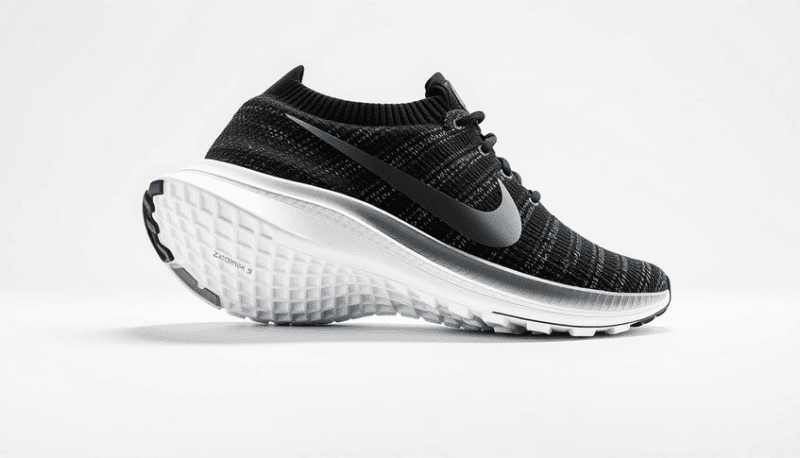Did you know trail marathon participants have grown by over 300% in the last ten years? More runners are now enjoying the challenge and beauty of trail races. This has made guides for training in trail marathons more popular than ever.
If you're a seasoned road runner or a trail lover aiming for the 26.2-mile mark, this guide is for you. It offers expert advice and strategies for effective training. We'll clear up myths and share tips on the unique needs of trail running, helping you reach your goals.

Key Takeaways
- Understand the differences between road and trail marathon training to optimize your approach
- Incorporate trail-specific workouts and strength training to build the necessary fitness and resilience
- Properly select and break in trail running shoes to prevent injuries and improve performance
- Manage glycogen depletion and fueling strategies for the unique demands of trail running
- Develop proper trail running form and technique to navigate uneven terrain with confidence
Dispelling Trail Marathon Training Myths
Training for a trail marathon means clearing up some wrong ideas. One myth is that you must greatly increase your training to get ready for trail running. But, the real secret is to focus on training that mirrors the challenges you'll face on the trail.
Importance of Running Economy at Higher Intensities
Many think that running a marathon is all about endurance. But, it's often more about how well you run at faster speeds. For trail marathons, focusing on running economy and speed work is key. This helps your body get ready for the varied terrain and quick downhill parts.
Optimizing Minimum Velocity for Hiking and Downhills
Some believe you only need to train for uphills and hiking in a trail marathon. But, it's just as crucial to work on your speed for going downhill. Improving your running economy and technique on descents helps you stay fast and save energy during the race.
By clearing up these training myths and focusing on targeted workouts, you can build the fitness and skills needed to ace your next trail marathon.
Unique Demands of Trail Marathon Training
Trail marathons are different from road marathons. They bring unique challenges for those moving from roads to trails. One big challenge is the stress on your body from downhill running.
Biomechanical Stresses of Downhill Running
Running downhill on steep, technical trails requires your muscles to work in a special way. This can lead to muscle damage and fatigue. To avoid this, practice purposeful downhill running during your training. This helps your body get used to the demands of steep descents.
Managing Glycogen Depletion Through Pacing and Fueling
Trail marathons also increase the risk of glycogen depletion. The uneven terrain and technical features can make running less efficient. It's important to pace yourself and fuel up right to keep going strong. Practice your pacing and fueling during training to see how your body handles the trail's demands.
| Road Marathon Training | Trail Marathon Training |
|---|---|
| Focused on maintaining consistent pace and effort | Requires constant adjustments in pace and effort due to terrain |
| Emphasis on building aerobic capacity and muscular endurance | Emphasis on developing technical skills and eccentric strength |
| Fueling strategy based on predictable energy demands | Fueling strategy must account for variable energy demands |
Understanding the unique demands of trail marathon training helps you prepare for the challenges of racing on technical trails. By focusing on downhill training and practicing your pacing and fueling, you'll be ready to conquer the trail and finish strong.
How to Train for a Trail Marathon
Training for a trail marathon is different from training for a road race. You need to focus on specific workouts and choose the right shoes. Here are some tips to help you prepare:
Incorporating Trail-Specific Workouts
Start by building up to workouts that mimic the race day challenges. This includes extra-long runs, training races, or back-to-back long runs. These workouts help deplete glycogen and stress your muscles. Also, work on running economy all year round. This means doing strides, shorter workouts, and longer tempo runs.
Selecting the Right Trail Running Shoes
- Look for shoes with a rugged outsole and aggressive lugs for better grip on rough terrain.
- Choose a shoe with a protective, cushioned midsole to soften the impact of trail running.
- Think about the terrain you'll run on and pick a shoe made for that type of ground.
- Make sure the shoe fits well and has a secure heel to keep your foot in place.
By focusing on trail-specific workouts and picking the right shoes, you can get your body and mind ready for a trail marathon. Don't forget to adjust your pace expectations. The technical aspects of trail running can change how fast you can go.

Adjusting Your Pace Expectations
Switching from road to trail marathons means changing how you pace yourself. Trail running is slower than road running because of the rough terrain and obstacles. You also need to adjust for changes in elevation.
Top road marathon runners often train more than ultra-trail runners. This is because road running is more about breathing and endurance. Ultra-trail running is about handling the physical stress of the trails.
Tips for Running Downhills Efficiently
Downhills are tough in trail marathons, but you can get better at them. Here are some tips:
- Lean forward a bit to let gravity help you go down, but don't overdo it.
- Shorten your steps and move your feet faster to stay in control and lessen the impact.
- Use your core and leg muscles to soak up the shock, not just your joints.
- Practice downhill running on different types of trails to get better and more confident.
Changing your pace and learning to run downhills well will help you do well in a trail marathon. You'll have a great time and feel accomplished when you finish.

"The key to a successful trail marathon is adapting your pace and technique to the specific demands of the terrain. With the right preparation and mindset, you can conquer those challenging downhills and reach the finish line strong."
Developing Trail Running Form and Technique
Learning how to run on trails is key for a trail marathon. It's important to focus on picking up your feet to avoid falls and keep moving on rough ground.
Picking Up Your Feet to Avoid Falls
When you're running trails, pay attention to where you put your feet. Make sure you lift them up to get over obstacles and roots. This stops you from tripping and helps you run more efficiently. By lifting your feet, you can move over rough surfaces better and keep your body in control during the marathon.
- Practice running on trails with a focus on lifting your feet higher than you would on a flat, paved surface.
- Engage your core muscles to maintain stability and balance as you navigate the uneven terrain.
- Develop a cadence and rhythm that allows you to effortlessly clear obstacles and maintain a smooth, efficient stride.
Adding trail-specific workouts to your training helps you get used to running with the right form on trails. By focusing on how to develop efficient trail running form and technique, you'll be ready for the challenges of a trail marathon. This way, you can avoid falls during your training.
"The key to avoiding falls on the trails is being proactive with your foot placement and lifting your feet higher than you would on a road. This helps you navigate the uneven surfaces and maintain control of your body throughout the run."
Gear and Equipment for Trail Marathon Training
Getting ready for a trail marathon means you need the right gear. This gear keeps you comfy and supported during training and the event. Choosing the best shoes and packing the right accessories is key to doing well and enjoying the experience.
Selecting the Right Trail Running Shoes
Choosing the right trail running shoes is crucial for your training. These shoes give you the grip, stability, and protection you need on rough trails. Think about these things when picking your shoes:
- Tread pattern and lugs for grip on various surfaces
- Cushioning and support for your feet and joints
- Breathability and moisture-wicking properties
- Fit and comfort for long-distance running
Buying a good pair of trail running shoes that fit your needs can really improve your trail marathon training. It can also help prevent injuries.
Essential Gear for Trail Marathon Training
There are other important pieces of gear for your trail marathon training too:
- Moisture-wicking apparel to keep you dry and comfy
- Hydration pack or belt to carry water and snacks for long runs
- Trekking poles for extra stability and support on tough terrain
- Headlamp or flashlight for running in the early morning or evening
- First-aid kit with things like bandages, antiseptic, and pain relievers
Having the right trail running gear can really help your training. It can also help you do well on race day.
| Gear Item | Purpose | Key Features |
|---|---|---|
| Trail Running Shoes | Provide traction, stability, and protection on trails | Lugged soles, cushioning, breathability |
| Hydration Pack/Belt | Carry water and snacks during long training runs | Adjustable fit, multiple storage compartments |
| Trekking Poles | Offer stability and support on technical terrain | Lightweight, adjustable length, shock-absorbing |
By picking the right trail running gear and using it in your training, you can make sure you're comfortable, efficient, and ready for the trail marathon.
Customizing Your Training Plan
Creating a training plan that fits you is key to doing well in a trail marathon. You can't just follow a generic plan. You need to think about your fitness level, running experience, and the trail's challenges. Adjust your training to match your needs and goals.
Transitioning from Road to Trail Running
Switching from road to trail running takes time to get used to. Trail running uses different muscles and requires more coordination than running on roads. Start by adding trail workouts like hill repeats and running on uneven ground. This will help you get ready for the unique challenges of trail running.
Incorporating Other Training Methods
Adding other types of workouts to your trail running can make you stronger and more resilient. Think about doing strength training, plyometrics, and low-impact exercises like cycling or swimming. These activities improve your muscle endurance, balance, and help prevent injuries. Mixing up your training prepares you for the tough terrain of a trail marathon.
FAQ
Q: What are the key principles for training for a trail marathon?
A: There's no one right way to train for a trail marathon. Everyone can find their own path to success. The article shares six key principles for training:
1. Marathon training focuses on staying aerobically fit and being strong. In ultras, being able to handle the physical stress is key.
2. It's tough to handle the stress of long runs if you're already stressed out. You need a strong base and resilience.
3. Downhill running can be hard on your body. It's important to practice running down hills during your training.
4. Running out of energy can slow you down. Learning to pace yourself and eat right is crucial.
5. Building up to race day by doing longer runs and training races is important. It helps prepare your body.
6. Working on your running efficiency all year is key. This includes doing strides, shorter workouts, and longer tempo runs.
Q: How does trail running pace differ from road running pace?
A: Trail running is usually slower than road running because of the softer ground and obstacles. Top marathon runners often do more training miles than ultra-trail runners. This is because marathons rely more on staying aerobically fit, while ultras need you to handle physical stress well.
Q: Why is it important to practice downhill running in trail marathon training?
A: Practicing downhill running is crucial because it's tough on your body. Long runs are a good time to work on going down hills efficiently. Your body can get used to the strain of downhill running with a bit of practice.
Q: How can runners manage glycogen depletion during trail marathon training?
A: Glycogen depletion can slow you down. It's important to learn how to pace yourself and eat right. Training with longer runs, races, or back-to-back long runs helps build up your endurance and stress your muscles.
DISCLAIMER
The information contained on Save on Sneaks and our related pages is provided for entertainment and informational purposes only. It is not intended as a substitute for the advice of or treatment that may be prescribed by your physician or other health care provider.
Understand that you are solely responsible for the way this information is perceived and utilized, and do so at your own risk. In no way will Save on Sneaks be responsible for injuries or other problems that might occur due to the use of this website or any actions taken based on the content of this website. Save on Sneaks will not be held responsible for the conduct of any companies and websites recommended within this site.
Before adhering to any of the information or recommendations or undertaking any exercise program or diet regimen, you should consult your physician.






